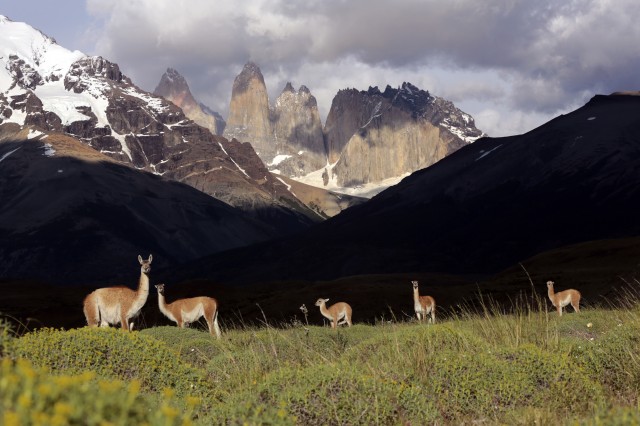The following words are taken from “At Home with the Patagonians” written by British explorer, George Chaworth Musters, in 1873. We chose this section on guanacos as these camelids roam around the lodge at Awasi Patagonia and can be seen from the 12 individual villas. They are somewhat iconic in the wild lands of Patagonia.
“The guanaco abounds in a vast stretch of land spanning from Peru as far as the regions situated to the east of the Andes, and the vast plains from Mendoza to the Strait of Magellan and even as far as Tierra del Fuego.
As a general rule, the male guanaco forms a troop of a hundred females, and in case of any danger, he moves to the pinnacle of a nearby rock and begins to neigh as a horse would do, maintaining himself as a barrier between danger and his female companions. Yet, during mating season, the males travel together in packs, as do the females.
Many times they will wait until a predator approaches and then flee; rapidly distancing themselves from danger. Their means of defense principally consists of a kick using their legs, especially their front legs, although sometimes they also bite and with their two characteristic fangs they can provoke a grave wound. The guanaco’s meat is excellent, similar to that of the ram; that of the calf is more like veal. Undoubtedly the wool is used for trading means, for its fine texture, and currently is valuable in Chile where it is knitted to make ponchos then sold at elevated prices.

Herds of guanacos roaming freely can be oserved from all private Villas at Awasi Patagonia.
There is one remarkable detail about the guanaco; during certain periods of the year its stomach produces a type of secretion, which transforms into a hard stone-like substance, round pieces varying in diameter from a quarter of an inch to half an inch. Some Indians claim these stones have medicinal qualities. The natives make complete use of the guanaco. The skin of the adult is used in awnings, covers or tents, and that of the fetus or calf is used in blankets; the tendons of the back provide thread and the skin of the neck is particularly flexible and long-lasting, making loops, bolas or reins etc. The skin of the hough provides shoes or linings for the bolas and with the femur or thigh bone they make dice or musical instruments.
The young animal is very light footed and provides a challenging hunt. It reaches complete maturity at two or three years of age and the best way to describe the adult male are in the words of Lieutenant Gallegos. We were observing a lone guanaco perched on a hill above us that from time to time would let out an alarmingly piercing whine, when Gallegos said ̈Ah!, you are indeed a strange animal! You have the whine of a horse, the wool of a ram, the neck of a camel, the feet of a deer and the speed of the devil ̈.
At Home with the Patagonians––1873. by George Chaworth Musters
About Awasi Patagonia:
Situated in a private reserve overlooking Torres del Paine National Park, our luxury lodge has just 14 villas and a main lodge. Each villa is assigned with a private guide and 4WD so guests can explore at their own pace, visiting where they want, when they want.

